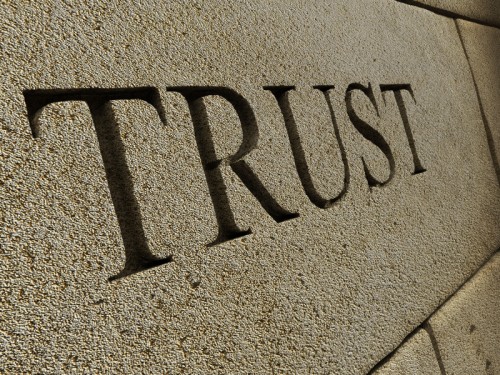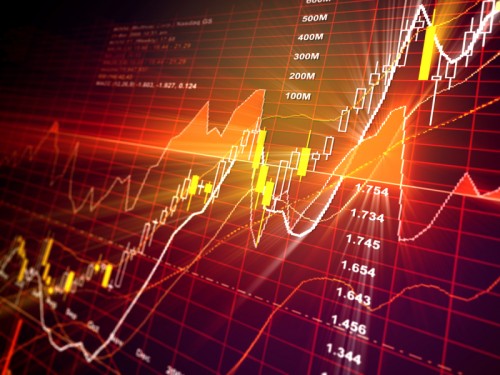The Psychology of Risk
Just a few days ago, I was talking to someone named Marshall. His dad is the head of a major investment firm which manages over $1Billion. We are in talks with his fathers firm about investing with our fund and Marshall was the first person we were talking to. We got into a really good conversation about the psychology of risk and some great things came out of the conversation. But first, we are going to start with a question;
Have you ever heard of a hedge fund having a few years of impressive performance, maybe even a +60% year, but then they have a year where they lose 50%?
It has happened many times and what happens next is quite predictable. They close up shop…only to do what? Start a new fund about a year later.
Why do they close up shop, start up a new fund and what does this have to do with the Psychology of Risk?
Well, lets do the math. Perhaps they are managing $100 million and take a 50% loss. That brings them to $50 million. Being they make money on performance, what do they have to do now? Have a 100% return on the $50 million just to get back to break-even. So what do they do? They say to themselves, ‘Well, even if I have a stellar year and do 100%, i’m still working for free for an entire year…f-this, i’m closing up shop‘. This is why many hedge funds close up shop in such a situation.
Now the real question should be, ‘why did they take a 50% loss’? The answer has to do with risk. If they were controlling risk, they would never had gotten that far down. If one is managing risk properly, it will take an immense series of consecutive losses, or massive over-leveraging to get to that place. But hedge funds are different from you – they are not trading their capital – it is their clients money so if they lose it, it’s not the end of the world.
You on the other hand are trading your own capital, and you cannot just close up shop and start over. If you lose all your capital, that’s it. This is why you have to control risk. Capital is your ammo, and once you are out of ammo, you are out of the war. Now lets get into risk and psychology.

The Psychology of Risk
As we wrote just recently, everyone has an equity threshold – a level of money whereby it affects you psychologically. Because you are working with a larger amount of money then usual, it affects your emotions and thoughts which can cause you to make bad trading decisions. This is your equity threshold.
In terms of losses, you also have one as well. An equity loss threshold. After you have lost a certain amount of equity, you become psychologically affected and emotional about the losses. For everyone, it is different, but you have it nonetheless. Once you cross this level, the psychological pressures mount and they can manifest in many ways.
Perhaps this sounds familiar;
-You start to think negatively about your trading ability
-You lose confidence
-You start to increase the leverage to ‘make up your losses’
-You start to doubt whether you can get back to break-even
-You are thinking about those losses, even while you are not trading
Has this happened to anyone? Especially after some big losses? Understandably so, especially to the developing trader.
This is why it is more critical than ever to manage risk – so you never get into this position where you add psychological pressure. Trading is already hard enough, why add any additional pressures?
Now that we have established how critical it is to control risk psychologically, let’s talk about some methods to do so.
A Fixed Percentage of Risk
When trading your system, whether it be price action or ichimoku trading, you will want to risk a fixed percentage of equity per trade. By doing this, you are guaranteeing no matter what size the stop is, the risk is the same. This makes it easier to;
a) psychologically accept the risk
and
b) keep consistency in your trading.
Once you become a successful trader with a long track record using a system, you will have a more finite understanding of how to gauge the risk per trade. Then you will have;
1) more confidence to deal with losses and trust your abilities
2) more information and experience to know how your system performs
3) a greater understanding of how your psychology works in regards to risk

But if you are a beginning or developing trader, you will not have this extra trust in your abilities and confidence to deal with large losses. You will not have a lot of information about your trading system. You will not have a significant understanding of how you psychologically work with risk.
Thus, we suggest keeping the risk small. This will minimize any additional psychological pressures affecting your trading. If you are using 1%, it would take a large amount of losses to get into some really negative territory.
It would also stand to reason once you get better at your trading, you start taking on larger risk per trade correct? Ironically, the best fund managers and traders in the world all keep their risk low, around 1-2% per trade. Why? Because they know how important it is to control risk, but also, how the psychology of risk affects one’s trading.
Reducing Risk as Your Losses Increase
Everyone enters a losing streak. It could be where you are psychologically off, or your system does not rhyme well with the market. This happens to all the best traders. So when it happens to you, do what they do – they lower the risk on their system.
If losses are mounting, lower your risk per trade. Cut it in half. This helps you to protect your downside and bottom line. Forget about making up the losses. Just focus on getting back in rhythm. When you do, the wins will increase and so will your equity. This will build confidence in your trading which will help lead to more wins. It becomes a self-reinforcing loop to making better trades.
Get a Trading System
If you do not have one already, get a trading system. You will want one which is rule-based that has clear rules for entries, exits, stops, limits, taking profits, everything! Why?
Money-management is a game of numbers. It is pure mathematics. If you have a discretionary trading system, how can you test your system to see if it’s working, or what parts are and what parts are not? You cannot, so get a rule-based system.
Why do you think algorithmic trading is on the rise? Do you think they have rules to enter and exit trades? Do you think the best traders with long successful track records have rule-based systems? What are patterns based on? Rules. What are systems based on? Patterns. What are you trading? Patterns. So get a trading system which is rule-based.

It is said that an expert can simplify complex things. This is what a good mentor should do. If they are trading, they are likely doing so through patterns. And if so, then you know you have a good mentor when he can simplify the patterns into simple rules which are clear and well-defined. If they cannot, then they are not a good mentor nor an authority or expert.
Having a rule-based system will also take a lot of the confusion and emotions out of trading. One of the most challenging things for developing traders is having to make decisions about making a trade. Is the market going up or not? Where do I put my stop and limit? Is this a good trade or not? All of these questions affect your psychology, and without rules, all the pressure is on you.
Consequently, having rules makes it easier to manage risk because if you are trading a rule-based system, you can see the 3rd dimension of money management – accuracy. Without knowing your systems accuracy over time, money management is meaningless. You could have an R:R (reward to risk) of 3:1 and lose money. You can have and R:R of 1:1 and make money. What is it that separates the two? Accuracy. And the only way to know this is to have a rule based system. This is 3-dimensional risk.
In Conclusion
In dealing with the psychology of risk, it is important to understand how psychological pressures can affect your trading. It is thus imperative to have proper money management. Trading is already hard enough so no need to add undue pressures. How can you manage this?
1) Have a fixed equity % at risk per trade. This allows you to psychologically deal with losses better along with keeping yourself out of bad situations where you feel you have to make up the losses instead of working to make good trades.
2) Reduce Risk after a Series of Losses. This helps you to protect your capital and downside. There is wisdom in the cliche ‘win more when you win and lose less when you lose’. This also makes it easier to make up your losses should you get out of sync.
3) Get a Trading System. By having a system which is rule-based, you can understand how the mathematics are working for you (or against you). This will allow you to make changes in your system to give you that edge. Proper money-management is all about mathematics and when you put them in your favor, you dramatically increase the chances to make money. Having a rule based system also reduces emotions and psychological pressures to you can make better trading decisions.
Please remember to leave your comments below while tweeting it on twitter and liking it on facebook.
Make sure to check out our latest video on Advanced Price Action Forex Trading.

Nice article Chris!
This reminds me of my previous live account when I never placed hard stops because I thought my broker is stop hunting. It turned out that my analysis was a mess by then. Risk management is really of great importance in trading.
Hello Nel,
Yes, money-management is critical. And you should always have a stop. Anything could happen in the markets which would send the pairs hundreds of pips in a matter of minutes and you could easily with improper leverage be wiped out in minutes. Imagine being short eurchf when the SNB intervened and all of a sudden you were down 1000pips. That could destroy an account.
The number one tenant of money management is always protect your downside and neutralize risk at the earliest moment.
Kind Regards
Chris
Hi Chris,
Great article. I will remember all the important things you mentioned here by heart.
when you mentioned about “limit”, did you mean the risk limit for a trade such as a fixed percentage of equity? If not, what is it?
Thanks and regards,
Patricia
Hello Patricia,
Thanks for the kind words.
Hmm, not sure specifically what you are referring to when you talk about limit. Can you copy the text and respond back here so I know what you are referring to?
Kind Regards
Chris
Hi Chris,
you mentioned about “limit” at the following 2 points:
1. “If you do not have one already, get a trading system. You will want one which is rule-based that has clear rules for entries, exits, stops, limits, taking profits, everything! Why?”
2. “One of the most challenging things for developing traders is having to make decisions about making a trade. Is the market going up or not? Where do I put my stop and limit?”
Thanks,
Patricia
Hello Patricia,
Ahh ok, thank you for the clarification.
1) limit here refers to your targets which are also called your limit on the trade
2) same thing here.
Hope this helps
Kind Regards
Chris
Hey Chris!
It’s always reassuring reading your articles to keep focused. So many things can affect your skills and your mindset that can really put a damper on your trading. Your intake on the psychological aspects of trading and even life beyond trading are always refreshing, so thank you for that Chris.
As always, I look forward to reading more articles!
Hello Andreas,
Much appreciated. Yes, there is a lot to be aware of, but with the right mind training, discipline and diligence, one can get there for sure.
All the best.
Chris
Hi Chris,
Excellent article about risk. You’re one of the first I see that clearly recommends to lower the risk if a string of losses hits you and it’s a live saver. When to cut down on your risk? What I did is plotting my Equity curve on a daily bases and also put a SMA(10) on my equity curve chart as well. The rules now are, if the Equity curve is moving down but still above SMA i reduce my risk to 3/4 of what I use to do. So if I used 1% I now use 0.75% risk. If the equity curve is crossing down my SMA i cut my risk down to half. ( 0.5% ) and if the SMA is turning down and pointing down I drop back to only a quarter of my risk ( 0.25% ). Over time this helped me enormously and made years profitable that would have been else loosing years if i had a used a fixed risk (excel is your friend here or some good trade log software).
Wessel
Hello Wessel,
Much appreciated on the kind words. The goal of this article was to get people thinking about risk differently so hopefully this was achieved.
I like some of the things you have done with your modeling of risk – definitely something that needs to be explored. FYI – if your a good programmer,
one piece of software to consider is MAT Lab with the ‘economic modeling’ add-ons which offer some amazing tools for this.
Food for thought.
All the best.
Chris
You are wonderful Chris,
Each time i read your article it makes me feel like a pro.
How i wish i attend your seminar one day,i hope so, but i don’t know if you have ebook for these article or something else because you have really helped me a lot especially the you articles on 20ema and ichimoku. Please let me know if there is ebook and the price i will do everything to look for the money and buy it.
You are so wonderful in my trading career
Thanks !!!